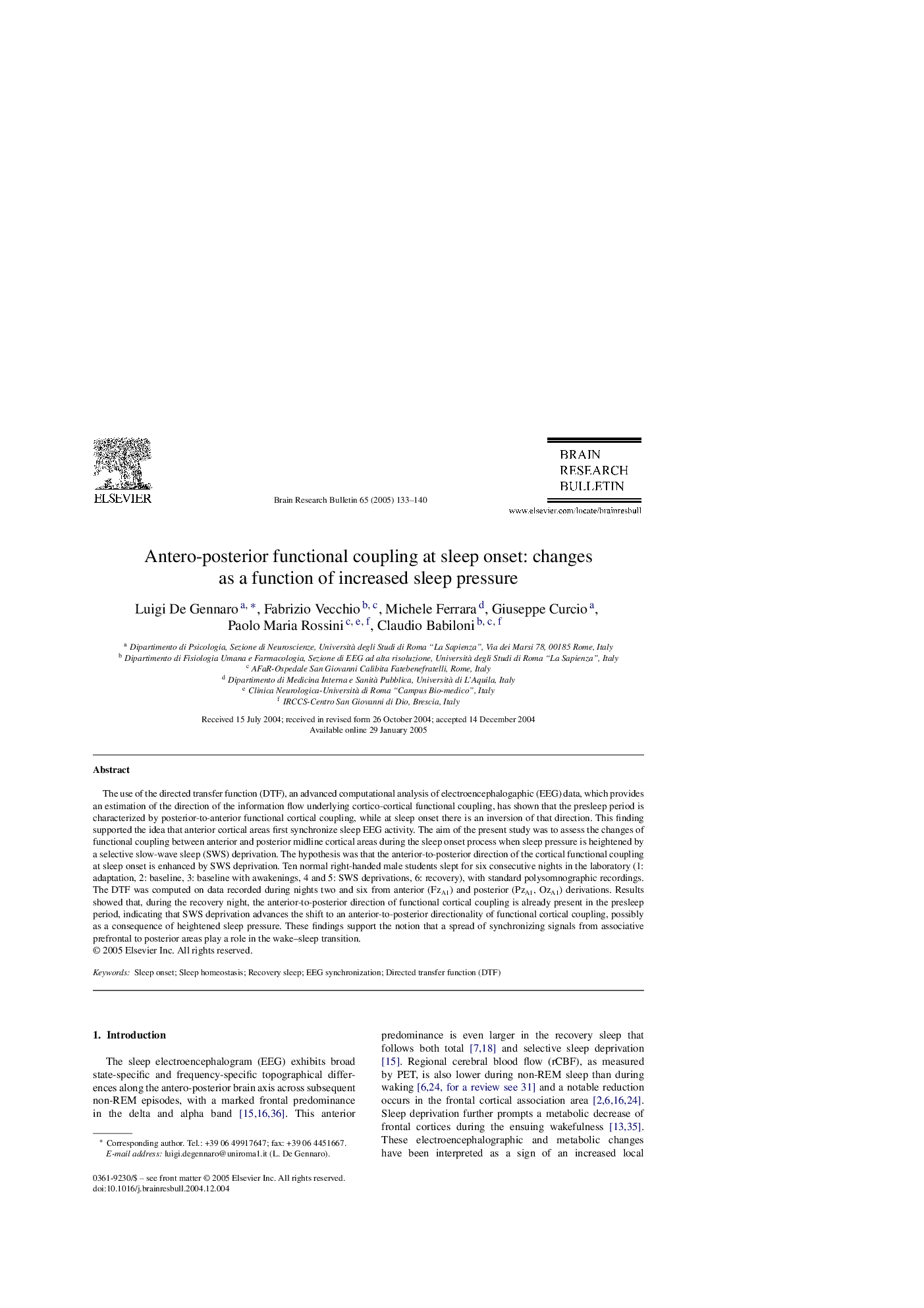| Article ID | Journal | Published Year | Pages | File Type |
|---|---|---|---|---|
| 9409689 | Brain Research Bulletin | 2005 | 8 Pages |
Abstract
The use of the directed transfer function (DTF), an advanced computational analysis of electroencephalogaphic (EEG) data, which provides an estimation of the direction of the information flow underlying cortico-cortical functional coupling, has shown that the presleep period is characterized by posterior-to-anterior functional cortical coupling, while at sleep onset there is an inversion of that direction. This finding supported the idea that anterior cortical areas first synchronize sleep EEG activity. The aim of the present study was to assess the changes of functional coupling between anterior and posterior midline cortical areas during the sleep onset process when sleep pressure is heightened by a selective slow-wave sleep (SWS) deprivation. The hypothesis was that the anterior-to-posterior direction of the cortical functional coupling at sleep onset is enhanced by SWS deprivation. Ten normal right-handed male students slept for six consecutive nights in the laboratory (1: adaptation, 2: baseline, 3: baseline with awakenings, 4 and 5: SWS deprivations, 6: recovery), with standard polysomnographic recordings. The DTF was computed on data recorded during nights two and six from anterior (FzA1) and posterior (PzA1, OzA1) derivations. Results showed that, during the recovery night, the anterior-to-posterior direction of functional cortical coupling is already present in the presleep period, indicating that SWS deprivation advances the shift to an anterior-to-posterior directionality of functional cortical coupling, possibly as a consequence of heightened sleep pressure. These findings support the notion that a spread of synchronizing signals from associative prefrontal to posterior areas play a role in the wake-sleep transition.
Keywords
Related Topics
Life Sciences
Neuroscience
Cellular and Molecular Neuroscience
Authors
Luigi De Gennaro, Fabrizio Vecchio, Michele Ferrara, Giuseppe Curcio, Paolo Maria Rossini, Claudio Babiloni,
